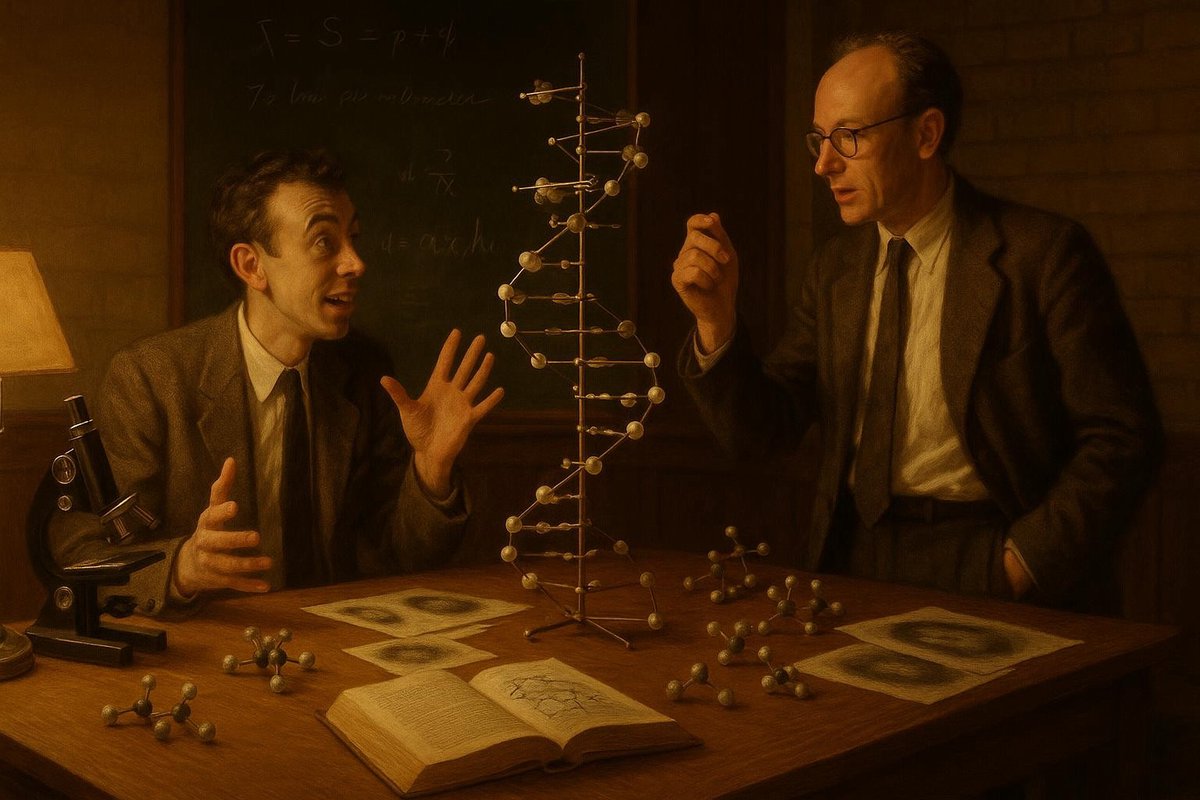
Unpacking the Question: How Did We Discover DNA’s Structure?
Have you ever wondered how we pinpointed the very architecture of life itself? While it might seem straightforward today, uncovering the structure of DNA was a captivating journey filled with twists and turns. Imagine being in a world where the blueprint of life was a mystery, and the scientific community was buzzing with theories. It was the early 1950s, and amidst this vibrant backdrop, James Watson and Francis Crick embarked on their intellectual adventure.
Before Watson and Crick’s groundbreaking work, scientists had bits and pieces of information. DNA was known to carry genetic information, yet its precise structure eluded them. The prevailing theories suggested a repetitive structure, but these lacked evidence. The field was ripe for a breakthrough, and the stakes were high.
- The world was recovering from World War II, fostering a spirit of collaboration.
- Technological advancements in X-ray crystallography were opening new research doors.
- Renowned scientists like Rosalind Franklin were also contributing crucial data.
In this climate of exploration and healthy competition, Watson and Crick set out to solve the puzzle that would redefine biology as we know it.
Surprising Facts: The Role of X-ray Crystallography in the DNA Discovery
Interestingly, the path to discovering DNA’s structure involved a technique that sounds more like magic than science to the uninitiated: X-ray crystallography. This method, crucial for visualizing molecules, offered a way to see the unseeable. But how did it work? Think of crystallography as a sophisticated game of ‘shadow puppets’ where X-rays play the role of light, casting shadows that reveal molecular secrets.
- X-rays are beamed through a crystal that contains the molecules of interest.
- The crystal scatters the X-rays, creating a pattern that can be captured on film.
- Interpreting these patterns requires skill, as they are complex and require mathematical decoding.
Rosalind Franklin, working at King’s College London, captured ‘Photograph 51,’ a critical piece of evidence. Her work hinted at a helical structure, but it was Watson and Crick who connected the dots. They used Franklin’s data—without her direct knowledge, which is a point of ethical debate—and combined it with their model-building expertise to propose the double helix.
What Science Says: The Impact of the Double Helix Model
Once the double helix model was proposed, it was like a seismic shift in the scientific world. The structure they unveiled was not just a model; it was a revelation. But what made this discovery so transformative? Let’s dig into the science.
- DNA’s structure suggested a mechanism for replication: the strands could separate and serve as templates for new strands.
- The pairing of adenine with thymine and guanine with cytosine explained how genetic information is consistently passed down.
- The model fostered new fields of study, including genetic engineering and biotechnology.
Watson and Crick’s model, published in 1953, revolutionized our understanding of molecular biology. It wasn’t just about seeing the structure; it was about perceiving the potential it held. Their work sparked debates and inspired countless experiments, leading to the genomic era we know today.
What It Means for Us: The Legacy of Watson and Crick’s Discovery
The implications of Watson and Crick’s discovery resonate far beyond the walls of laboratories. It opened a new chapter in science and humanity’s understanding of itself. So, what does this mean for us, decades later?
- The discovery has paved the way for medical advancements, from genetic testing to personalized medicine.
- It has prompted ethical debates about cloning and genetic modification.
- Education and public perception of science have evolved, inspiring generations of scientists and thinkers.
Today, DNA is more than a molecule; it’s a symbol of life’s complexity and interconnectedness. The mystery that Watson and Crick unraveled continues to fuel our quest for knowledge. Their journey reminds us of the power of curiosity and the relentless pursuit of truth, no matter how elusive it may seem.
As we reflect on their monumental achievement, we learn that scientific discovery often hinges on collaboration, curiosity, and sometimes a touch of serendipity. Their story is a testament to the intricate dance between data, imagination, and determination.
Fuel Someone Else’s Curiosity
As you ponder the molecular dance of the double helix, why not share this story with a fellow curious mind? Discussing such groundbreaking scientific feats can spark inspiration and foster a deeper appreciation for the invisible threads that weave through our lives. Encourage others to delve into the world of scientific discovery and perhaps, ignite a sense of wonder within them.

Leave a Reply